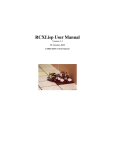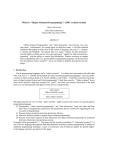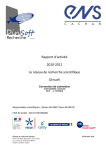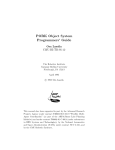Download Multi agent systems simulator in Common Lisp
Transcript
PŘÍRODOVĚDECKÁ FAKULTA UNIVERZITY PALACKÉHO
KATEDRA INFORMATIKY
BAKALÁŘSKÁ PRÁCE
Multi-agent systems simulator in Common Lisp
2014
Peter Vaňušanik
Anotace
Ciel’ tejto bakalárskej práce je využit’ jazyk Common Lisp k naprogramovaniu obecného
simulátora multiagentných systémov, ktorý by bol podobný teoretickému modelu. Takto
napı́saný framework by mal byt’ schopný exportu simulácie do súboru a aj pohodlného
užı́vatel’ského rozhrania.
Děkuji doc.RNDr. Michalu Krupkovi, Ph.D. za cenné rady, ochotu a trpělivost.
I would also like to thank Derrick Lam for helping with language proficiency and proofreading.
Obsah
1. Introduction
8
2. Artificial Intelligence
2.1. What is an AI? Types of AI research
2.1.1. Acting humanly . . . . . . . .
2.1.2. Thinking humanly . . . . . .
2.1.3. Thinking rationally . . . . . .
2.1.4. Acting rationally . . . . . . .
2.2. Multi-agent Systems . . . . . . . . .
2.3. Agents . . . . . . . . . . . . . . . . .
2.3.1. Rational agent . . . . . . . .
2.4. Agent types . . . . . . . . . . . . . .
2.5. Environment . . . . . . . . . . . . . .
.
.
.
.
.
.
.
.
.
.
9
9
9
9
10
10
10
10
11
12
12
.
.
.
.
14
14
14
14
17
4. Common Lisp Multi-agent Systems Simulator - cl-ass
4.1. Features of the cl-ass framework . . . . . . . . . . . . . . . . . . . . . . . . .
4.2. Implementation . . . . . . . . . . . . . . . . . . . . . . . . . . . . . . . . . .
4.3. Features of Common Lisp used . . . . . . . . . . . . . . . . . . . . . . . . .
19
19
19
20
5. User Manual
5.1. Installation and running the examples .
5.1.1. Installation . . . . . . . . . . .
5.1.2. Loading examples . . . . . . . .
5.2. How to use . . . . . . . . . . . . . . .
5.2.1. Environment . . . . . . . . . .
5.2.2. Agent . . . . . . . . . . . . . .
5.2.3. Simulation . . . . . . . . . . . .
5.2.4. Complete example . . . . . . .
5.3. Full API Documentation . . . . . . . .
5.3.1. Environment . . . . . . . . . .
5.3.2. Agent . . . . . . . . . . . . . .
5.3.3. Simulation . . . . . . . . . . . .
5.3.4. Export . . . . . . . . . . . . . .
5.4. Graphics library . . . . . . . . . . . . .
5.4.1. How to use . . . . . . . . . . .
5.4.2. Complete example . . . . . . .
5.4.3. Graphics api . . . . . . . . . . .
22
22
22
22
22
22
23
25
25
27
27
28
30
32
33
33
35
37
.
.
.
.
.
.
.
.
.
.
.
.
.
.
.
.
.
.
.
.
.
.
.
.
.
.
.
.
.
.
.
.
.
.
.
.
.
.
.
.
.
.
.
.
.
.
.
.
.
.
.
.
.
.
.
.
.
.
.
.
.
.
.
.
.
.
.
.
.
.
.
.
.
.
.
.
.
.
.
.
.
.
.
.
.
.
.
.
.
.
.
.
.
.
.
.
.
.
.
.
.
.
.
.
.
.
.
.
.
.
.
.
.
.
.
.
.
.
.
.
.
.
.
.
.
.
.
.
.
.
.
.
.
.
.
.
.
.
.
.
3. Common Lisp language
3.1. Why Common Lisp? . . . . . . . . . . . . . . . . . . . . . . .
3.1.1. What is Common Lisp . . . . . . . . . . . . . . . . . .
3.1.2. Main features of Common Lisp . . . . . . . . . . . . .
3.1.3. Why use the LispWorks Common Lisp implementation
4
.
.
.
.
.
.
.
.
.
.
.
.
.
.
.
.
.
.
.
.
.
.
.
.
.
.
.
.
.
.
.
.
.
.
.
.
.
.
.
.
.
.
.
.
.
.
.
.
.
.
.
.
.
.
.
.
.
.
.
.
.
.
.
.
.
.
.
.
.
.
.
.
.
.
.
.
.
.
.
.
.
.
.
.
.
.
.
.
.
.
.
.
.
.
.
.
.
.
.
.
.
.
.
.
.
.
.
.
.
.
.
.
.
.
.
.
.
.
.
.
.
.
.
.
.
.
.
.
.
.
.
.
.
.
.
.
.
.
.
.
.
.
.
.
.
.
.
.
.
.
.
.
.
.
.
.
.
.
.
.
.
.
.
.
.
.
.
.
.
.
.
.
.
.
.
.
.
.
.
.
.
.
.
.
.
.
.
.
.
.
.
.
.
.
.
.
.
.
.
.
.
.
.
.
.
.
.
.
.
.
.
.
.
.
.
.
.
.
.
.
.
.
.
.
.
.
.
.
.
.
.
.
.
.
.
.
.
.
.
.
.
.
.
.
.
.
.
.
.
.
.
.
.
.
.
.
.
.
.
.
.
.
.
.
.
.
.
.
.
.
.
.
.
.
.
.
.
.
.
.
.
.
.
.
.
.
.
.
.
.
.
.
.
.
.
.
.
.
.
.
.
.
.
.
.
.
.
.
.
.
.
.
.
.
.
.
.
.
.
.
.
.
.
.
.
.
.
.
.
.
.
.
.
.
.
.
.
.
.
.
.
.
.
.
.
.
.
.
.
.
.
.
.
.
.
.
.
.
.
.
.
.
.
.
.
.
.
.
.
.
.
.
.
.
.
.
.
.
.
.
.
.
.
.
.
.
.
.
.
.
.
.
.
.
.
.
.
.
.
.
.
.
.
.
.
.
.
.
.
.
.
.
.
.
.
.
.
.
.
.
.
.
.
.
.
.
.
.
.
.
.
.
.
.
.
.
.
.
.
.
.
.
.
.
.
.
.
.
.
.
.
.
.
.
.
Conclusions
40
Závěr
41
Reference
42
6. Content of the included DVD
43
5
Listings
1
2
3
4
5
6
7
8
9
10
11
12
13
14
15
16
17
18
19
20
Macro example . . . . . . . . . . . . . . .
Multiple evaluation error . . . . . . . . . .
Multiple evaluation (almost) correct code .
Multiple evaluation - correct code . . . . .
Defining new environment . . . . . . . . .
Method for initializing new environment .
Methods for modifying environment . . . .
Defining our agent . . . . . . . . . . . . .
is-dirty? percept definition . . . . . . . . .
Defining actuators . . . . . . . . . . . . .
Simple Vacuum Cleaner agent function . .
Defining simulation . . . . . . . . . . . . .
Running the simulation . . . . . . . . . . .
Querying the simulation . . . . . . . . . .
Random vacuum cleaning agent simulation
Defining graphics simulation . . . . . . . .
Defining clean-pane for our simulation . .
Defining rendering . . . . . . . . . . . . .
Running the simulation . . . . . . . . . . .
Random vacuum cleaning agent simulation
6
. . . . . . . . . .
. . . . . . . . . .
. . . . . . . . . .
. . . . . . . . . .
. . . . . . . . . .
. . . . . . . . . .
. . . . . . . . . .
. . . . . . . . . .
. . . . . . . . . .
. . . . . . . . . .
. . . . . . . . . .
. . . . . . . . . .
. . . . . . . . . .
. . . . . . . . . .
. . . . . . . . . .
. . . . . . . . . .
. . . . . . . . . .
. . . . . . . . . .
. . . . . . . . . .
- graphics version
.
.
.
.
.
.
.
.
.
.
.
.
.
.
.
.
.
.
.
.
.
.
.
.
.
.
.
.
.
.
.
.
.
.
.
.
.
.
.
.
.
.
.
.
.
.
.
.
.
.
.
.
.
.
.
.
.
.
.
.
.
.
.
.
.
.
.
.
.
.
.
.
.
.
.
.
.
.
.
.
.
.
.
.
.
.
.
.
.
.
.
.
.
.
.
.
.
.
.
.
.
.
.
.
.
.
.
.
.
.
.
.
.
.
.
.
.
.
.
.
.
.
.
.
.
.
.
.
.
.
.
.
.
.
.
.
.
.
.
.
.
.
.
.
.
.
.
.
.
.
.
.
.
.
.
.
.
.
.
.
.
.
.
.
.
.
.
.
.
.
.
.
.
.
.
.
.
.
.
.
15
15
15
16
23
23
23
24
24
24
24
25
25
25
25
33
34
34
34
35
Seznam obrázků
1.
Vacuum Cleaner simulation in graphics. . . . . . . . . . . . . . . . . . . . . .
7
35
1.
Introduction
The reason why I picked multi-agent simulators as my thesis topic is my love for the
Common Lisp language. Unfortunately in modern days, Common Lisp is regarded as an old,
ancient language that only academia or very old programmers use, which is simply not true.
Common Lisp is as modern as any other language. In fact, many features of Common Lisp
are regularly borrowed and ”reinvented”as new ones for other languages, such as Java or
Python.
With the help of Common Lisp, I will present a framework called cl-ass - Common
Lisp (multi)agent systems simulator created for this thesis. In chapter 2, I will present
a theoretical background into artificial intelligence and, more specifically, into multi agent
systems. In chapter 3, I will present the Common Lisp language and its main features, along
with the LispWorks IDE I have chosen to use to develop cl-ass in. Chapter 4 is devoted
to how cl-ass was created and the features of Common Lisp used in its creation. Lastly,
chapter 5 contains a user manual with complete API for both the framework and graphical
add-on capi-loader.
8
2.
Artificial Intelligence
The text in this section of the thesis is based on ”Artificial Intelligence: A Modern
Approach”by Stuart Russel and Peter Norvig[1]. It provides a theoretical background on
artificial intelligence research and, more specifically, multi-agent systems.
2.1.
What is an AI? Types of AI research
Artificial Intelligence has been around since the beginning of computer science in general.
Scientists were always interested in AI, and it is one of the most exciting fields in computer
science research. Before we can study AI, we must define what AI actually is. There are two
main branches of AI, each with two subcategories based on their aims.
Some researchers base AI on human intelligence, and believe that true AI should be as
close to human intelligence as possible. Other researchers, however, base their research on
ideal intelligence, which is not based on human intelligence at all and is instead based on
the concept of rationality.
Both of these branches also distinguish between AI that can think and AI that can act.
While the two are related to each other, they are conceptually different.
We can summarize the four AI approaches along the two dimensions as:
• Acting humanly - The Turing test approach
• Thinking humanly - The cognitive modeling approach
• Thinking rationally - The ”laws of thought”approach
• Acting rationally - The rational agent approach
2.1.1.
Acting humanly
This approach centers around the so-called Turing test proposed by Alan Turing. The
test is based on the idea that if a human operator is unable to clearly distinguish between
another human and an AI solely based on written questions and answers, we can say the that
AI is sufficiently human. The Complete Turing test is similar to the standard Turing test
except the AI would also have to operate mechanical parts that would give and take objects
from a human operator.
Required skills for the AI include: natural language processing, knowledge representation,
automated reasoning, machine learning. To pass the complete test, these skills are also required: computer vision, robotics.
2.1.2.
Thinking humanly
Before we can design an AI based on this approach, we have to define how humans
think. We either have to study the thoughts or the physiology of the human brain, which is
obviously harder. In computer science, one result of the cognitive modeling approach is the
General Problem Solver (GPS) (Newell and Simon, 1961)[6].
9
2.1.3.
Thinking rationally
This approach is based on the laws of thought based on logic. Logic is based on syllogisms by Greek philosopher Aristotle. In the 19th century, logistics defined a precise notation
for statements about the world around us and relation between them.
However, there are two problems with this approach. First, representing all problems in
the world by this notation could be incredibly complex, and second, information can often
be incomplete and thus hard to solve with 100% correctness.
2.1.4.
Acting rationally
This approach is based on the concept of agents. An agent is an entity that acts, but
computer agents also have other attributes. Agents that decide how to act based on previous
experiences stored in a memory and the program are called rational agents.
Rational agents, however, do not have to be completely correct as the ”laws of thought”approach requires. The agent might take a suboptimal action, either because there is
no other viable option for the agent (for instance, reflex) or because there might be another
gain in the future (searching phase).
This approach has two advantages. It can be applied to more general problems than the
”laws of thought”approach, and compared to the approached based on the human mind, it
is broader and can be applied to entities that are not human in nature.
2.2.
Multi-agent Systems
The goal of this thesis is to write a multi-agent systems simulator in Common Lisp.
Therefore, as defined in the previous section, such a simulator would fall under the acting
rationally approach. For that, we need to precisely define what a multi-agent system is.
A multi-agent system is a system containing an environment and one or more
agents. These agents perceive the environment via sensors and modify it via actuators.
The function that defines which actuators the agent will use to modify the environment is
called the agent function.
2.3.
Agents
An agent is anything that can be viewed as perceiving its environment through sensors
and acting upon that environment through its actuators (Russel and Norvig, 32)[1]. We
define a percept ϕ as the current value of one of its sensors at the current time. A percepts
sequence Φ is a history of all percepts that the agent has perceived until now. The behavior
of an agent is defined by its agent function f , which takes in a percept sequence and
percept and returns a set of actuators Aa and a modified percept sequence Φm :
f (Φ, ϕ) −→ {Φm , Aa } | ϕ ∈ Φm
An actuator a is a function that takes environment E and returns modified environment
Em :
a(E) −→ Em
10
Thus we can define an agent α as a set containing a set of sensors Σ, a set of actuators Γ
and an agent function f :
α = {Σ, Γ, f }
An agent program is a concrete implementation of a mathematical agent function.
2.3.1.
Rational agent
For an agent to be a rational agent, it must behave correctly, i.e. it does the right
thing at every moment. However, for that we need to define a way to measure success.
A performance measure determines whether an agent has performed successfully or not.
During the lifetime of an agent, it will generate changes to the environment via its actuators.
Based on those changes, the performance measure determines how successful the agent was.
A performance measure must not be part of the agent itself, but must instead be created by
the author of said agent, because it needs to be objective.
Rationality Rationality can be defined on these four criteria:
• Existence of a performance measure
• Prior knowledge of the environment it is in
• Actions that an agent can perform
• Percept sequence of percepts to date
Then we can define a rational agent as: For each possible percept sequence, a rational agent
should select an action that is expected to maximize its performance measure, given the evidence provided by the percepts sequence and whatever built-in knowledge the agent has.(Russel
and Norvig, 36)[1]
Other attributes of a rational agent An agent must not be omniscient, i.e. it must
not know the actual outcome of its actions. It might predict one, but it must not be 100%
accurate. Rationality maximizes the expected performance, while perfection maximizes its
actual performance. There is no need to create perfect, omniscient agents, because they can
not exist in real world environments, only in very limited, controlled ones.
A rational agent might also learn during its existence. Learning is basically modifying
its agent function based on the percepts sequence. Prior to that, there might also be a phase
of exploration, where an agent does not perform its normal duty, but instead gathers as
many percepts as it can because it wants to modify its agent function with learning. If an
agent is capable of learning, we can express his agent function as:
f (Φ, ϕ) −→ {Φm , Aa , fm } | ϕ ∈ Φm
If an agent relies on internal knowledge that its author gave to it and not by the percept
sequence it has gathered so far, we can say that agent lacks autonomy.
11
2.4.
Agent types
We can divide agents into types based on their agent function:
Table agent A table agents’ agent function contains a table of percept sequences and
actuators. Every history of percepts is mapped exactly to a list of actuators. While such an
agent is perfect, it is unrealistic in any environment, except minimalistic.
Reflex agent A reflex agent is an agent whose agent function decides on actuators only
by the list of current percepts, ignoring the percept sequence entirely.
Model-based agent A model-based agents’ agent function uses knowledge of the environment gathered by percept sequence along with its current list of percepts to determine
the actuators.
Goal-oriented agent A goal-oriented agent is the same as a model-based agent, but also
operates on the notion of a goal it is trying to achieve. It might even decrease its performance
measure to fulfill it.
Utility agent Utility agents operate with the notion of happiness. Every action is determined by how happy it makes the agent, and such an agent tries to maximize the happiness
it receives.
2.5.
Environment
An environment is basically a set of constraints, rules and objects with which the agent
is expect to interact. An environment has multiple properties:
Observability The environment is fully observable if an agent can, at any time, get a
complete snapshot of the environment via its sensors. If some information is missing, the
environment is only partially observable.
Determinism If the next state of the environment is fully defined by its current state and
the set of actuators the agent produces via its agent function, it is deterministic. Otherwise,
it is stochastic. However, if the next state of the environment is dependant on its previous
state and all the actions of all the agents, it is called strategic.
Time continuum If the environment is episodic, actions can be divided into stand alone
episodes where the agent reads the environment then performs any actions. However, this
episode does not have any impact on any next or previous episodes. If an environment is not
episodic, it is sequential.
State If the environment can change while agent is inside the agent function, such environment is then called dynamic. Otherwise it is called static.
12
State continuum If time is stopped when an agent queries the environment for its percepts, we can call the environment discreet. Otherwise it is continuous.
Agent count Lastly, if there is only one agent, we call the environment a single agent
environment. Otherwise it is called a multi-agent environment. If agents in the multi-agent
environment cooperate, it is called cooperative. Otherwise, it is called competitive.
13
3.
Common Lisp language
The goal of this thesis is to create a multi-agent simulator in Common Lisp. It must
conform not only to the basic theory presented in previous chapters but must also be flexible
and easy to use.
3.1.
Why Common Lisp?
Common Lisp has always been regarded as a language that artificial intelligence researchers should use. That misconception, however, is false. Common Lisp is a language that
can be used by any programmer to create any application. Nevertheless, some parts of the
language do have features which are helpful in artificial intelligence research.
3.1.1.
What is Common Lisp
Common Lisp is a dialect of the Lisp language family covered in the ANSI Standard1 . It
is a strong2 dynamically34 typed language with both lexical5 and dynamic67 scoping.
Generally, Common Lisp is an interpreted language8 that might be compiled into byte
code or machine code before execution (JIT9 ). Common Lisp is cross platform; however,
specific implementations might have platform-dependent fast loading modules containing
compiled Lisp code.
Common Lisp is a multiparadigim language, which means it supports multiple ways of
writing programs within it. You can write it functionally; use a powerful CLOS10 to write
object-oriented software; or use a powerful set of macro tools to perform source-to-source
transformations, source-to-same-source check up and even modify the reader itself via reader
macros.
3.1.2.
Main features of Common Lisp
A lot of features of Common Lisp have been ”reinvented”in a lot of the modern languages.
However, Common Lisp still has many features which are never presented together in other
programming languages. In this section of the thesis, the important features will be presented
along with the flaws or common pitfalls that programmers should pay attention to.
1
ANSI INCITS 226-1944 (R2004), formerly X3.266-1994 (R1999)
Typing errors are prevented during runtime.
3
Dynamically-typed languages check the types of variables during runtime by storing a tag containing
information about the variable’s type along with its value.
4
However, Common Lisp can also use a static type system when desired by the programmer, where the
compiler could exclude the tags for optimization.
5
Lexical scoping means that variables are bound by the source code, preserving the closures as they are
defined.
6
Dynamic scope means that the content of a variable is defined by the runtime of the program.
7
Common Lisp can use special variables which are dynamic.
8
Interpreted as in loaded from .lisp source files instead of being compiled into machine code
9
Just-in-time compilation, see more at http://en.wikipedia.org/wiki/Just-in-time compilation
10
Common Lisp Object System
2
14
Macros In my opinion, the most important feature of Common Lisp is its powerful macro
system. A macro is an ordinary Common Lisp function in which arguments and return
value are Common Lisp source code. This feature is only possible because of the so called
”parenthetic”way of writing Common Lisp source code. Due to the fact that the source code
of Common Lisp expression is all composed of regular Lisp objects, such as lists, symbols and
such, macro functions can take that source code in unevaluated form and perform translations
on it. The macro function then returns an expression itself which, if the code is evaluate, is
immediately evaluated.
Example 1 Macro example
1
2
3
4
5
( defmacro i f ∗ ( ( i f − v a r i a b l e − c a p t u r e if−argument ) t r u e &o p t i o n a l f a l s e )
‘ ( l e t ( ( , i f − v a r i a b l e − c a p t u r e , if−argument ) )
( i f , if−variable−capture
, true
, false )))
6
7
8
9
10
> ( i f ∗ ( c (+ 4 5 ) )
>
( print c ) )
9
9
There are two common problems with Common Lisp macros: multiple evaluation and identifier capture.
Multiple evaluation errors occur when we have a common part of the source copied over
multiple places instead of evaluating once to a symbol and then using that value in the
multiple places.
Example 2 Multiple evaluation error
1
2
3
4
5
( defmacro log−around ( message &body code )
‘ ( progn
( format t , message )
, @code
( format t , message ) ) )
6
7
8
( defun rnd−message ( )
( format n i l ”Random message : ˜R˜%” ( random 1 0 0 0 ) ) )
9
10
11
12
> ( log−around ( rnd−message )
( print ” Inside ”) )
Random message : s e v e n hundred and twenty−eight
13
14
15
” I n s i d e ” Random message : f o u r hundred and n i n e t y − f o u r
NIL
We could fix it by making a symbol sym and evaluating the value into it:
Example 3 Multiple evaluation (almost) correct code
1
2
3
( defmacro log−around−correction−1 ( message &body code )
‘ ( l e t ( ( sym , message ) )
( format t sym )
15
, @code
( format t sym ) ) )
4
5
6
7
8
9
> ( log−around−correction−1 ( rnd−message )
( print ” Inside ”) )
Random message : two hundred and twenty−seven
10
11
12
” I n s i d e ” Random message : two hundred and twenty−seven
NIL
However, by trying to solve the previous error by binding the value into the symbol sym, we have created another problem. We introduced a new symbol into the old
source code. Had the original source code contained symbol sym anywhere, our new
sym would interfere with the original one. You might argue that you could use symbol
some-very-unlikely-to-be-really-used-symbol instead of the generic sym; however,
that is not the correct solution to the problem. Common Lisp gives us the tool we need
for this, the function gensym, which creates a symbol that is guaranteed to never be used by
the original source code or any other call to gensym.
Example 4 Multiple evaluation - correct code
1
2
3
4
5
6
( defmacro log −arou n d − cor rect ( message &body code )
( l e t ( ( sym ( gensym ) ) )
‘ ( l e t ( ( , sym , message ) )
( format t , sym )
, @code
( format t , sym ) ) ) )
7
8
9
10
> ( l o g − a r oun d −c orre c t ( rnd−message )
( print ” Inside ”) )
Random message : t h r e e hundred and t h i r t y − o n e
11
12
13
” I n s i d e ” Random message : t h r e e hundred and t h i r t y − o n e
NIL
Macros can also be used to inspect the source code, in which case they only traverse the
expression (which is always also an AST11 ) and return it back afterwards.
CLOS Th CLOS - Common Lisp Object System - is a facility for object-oriented programming (OOP) in Common Lisp. CLOS differs from many other OOP facilities with its
flexibility and robustness. The basic parts of CLOS are classes, instances of classes, generic
functions and methods of those generic functions. In CLOS, a class is only an object with a
list of slots and additional metadata. Classes can have multiple bases, and slots within classes
can be allocated inside instances (with :allocation :instance, which is also default) or
”statically”inside the class type (with :allocation :class).
CLOS is multi-dispatching system. Instead of grouping functions into methods bound by
specific classes as in most OOP languages, CLOS uses generic functions which group concrete
method implementations. A dispatch is then based on the types of arguments during runtime.
11
Abstract Syntax Tree
16
Each concrete method lists the types of its arguments (or no type if it accepts any type for
that argument), and the generic function itself dictates which method is actually called.
Other than type, CLOS also allows (eq constant ) as an argument, in which case the
dispatch will fire that method if the provided argument is a constant. This is mostly used
with NIL. CLOS dispatching is not only based on primary methods (standard methods), but
also auxiliary methods. If you prefix a method with :before, :after, or :around you can
register methods that are called before, after or around the primary method. This feature
has been re-invented by aspect-oriented programming, especially in Java12 .
Restarts Most modern languages13 have facilities included for handling exceptional states.
Common Lisp has a similar facility included called Conditions. What makes Common Lisp’s
unique, however, is that it also provides the programmer a way to set up so called ”restarts.”
In normal exception handling, you have code logic broken into two parts: signaling an
exception and handling the exception, with both parts handled by completely different code,
usually across libraries. The Condition system, however, splits the code logic into three parts:
signaling a condition, handling the condition and restarting from a condition.
In exception handling, if an exceptional state has occurred inside the code, all of the stack
information between signaling and handling the exception is lost. However, with conditions,
you can handle the condition (fix a problem, reestablish connection, etc) and then continue
from the restart point, which could be back at the place where the exception was signaled,
without losing the stack during the handling of that condition.
3.1.3.
Why use the LispWorks Common Lisp implementation
LispWorks is multi-platform integrated development environment (IDE) for Common
Lisp. I have decided to make cl-ass in LispWorks because:
• It is multi-platform, working on Linux, Windows, Mac Os X and many more
• It is fast, robust, and reliable
• It follows ANSI standard, including good MOP14 support
• Personal use is only restricted by session time (you can only have it open for 5 hours,
but you can reopen it to restart the timer)
• Multi-platform GUI toolkit CAPI
• LispWorks also provides FFI15 for opening C/C++ based libraries
• cl-ass is supposed to be used by programmers studying artificial intelligence - having
an IDE already included for free
12
For instance, AspectJ.
Including Java, C++, Python, etc.
14
Meta Object Protocol - a way of implementing CLOS that was unfortunately not included in the ANSI
standard
15
The Foreign Function Interface
13
17
The main disadvantage of LispWorks is that it is a commercial product. To fully use its
features, you have to pay for a license. However, cl-ass does not use any features not
included in the free personal version of LispWorks (as it was programmed in one).
18
4.
Common Lisp Multi-agent Systems Simulator - class
cl-ass is multi-platform, multi-agent systems simulator written in Common Lisp. Its
main purpose is to present artificial intelligence researchers a way to easily create multiagent simulations with an easy-to-use API that is based on the theory behind rational agents
presented in chapter 2[2., page 9]. It supports saving a whole simulation into a single file,
making it easily portable between computers. With a powerful IDE behind LispWorks, artificial intelligence researchers can use the tools included, such as a debugger, tracer, profiler
or any library included with/available for Common Lisp.
4.1.
Features of the cl-ass framework
cl-ass is based on the theory behind artificial intelligence. Therefore, the user can:
• Define an environment. cl-ass only supports static state[2.5., page 12], continuous[2.5., page 12] environments. By default, the environment is also deterministic/strategic[2.5., page 12]; however, the user can change that behavior by modifying
the environment independent of agents.
• Define agents, their percepts, actuators and their agent function.
• Iterate over the simulation or reset it back to its starting state.
• Create a graphical window and display the contents of the simulation on the screen at
every step.
• Export the simulation along with any of its dependencies into a separate lisp file16 .
• Use the provided abstraction to define a simulation and its components in a clean way,
minimizing boilerplate coding.
cl-ass has been thoroughly tested on the Microsoft Windows 7 operating system; however, it
should fully support every operating system that LispWorks supports with a CAPI interface
(if you require the graphical portion of the framework), which includes at least Windows,
Mac Os X and Unix/Linux.
4.2.
Implementation
cl-ass consists of two .lisp files – cl-ass.lisp containing the main code of the framework and capi-loader.lisp containing the GUI add-on based on CAPI – along with 3
examples. To load the examples, you need to set the current working directory for LispWorks
to the examples directory17 .
16
Simulation code should not use any functions nor should it compile its methods. If you want to include
functions, you can add the file as a dependency
17
(hcl:change-directory path)
19
cl-ass’s main feature is its conformity with the theoretical basis of multi-agent systems.
Agents are instances of the agent subclass, and both percepts and actuators are present within the agent as methods of the class. Additionally, percepts are present as slots of the agent
class, thus, they can be easily queried during the agent function. Everything is correctly encapsulated, thus, you cannot (without using global variables) query the environment. Instead,
agents have to rely on their internal memory and the values of percepts. Agent functions only
need to return a list of symbols with the same name as actuators to perform those actions.
Again, the environment is not available for modification outside the defined actuators.
4.3.
Features of Common Lisp used
Common Lisp has not only been chosen because of how the end user will use the cl-ass
framework, but also because implementing it without Common Lisp would have been much
more difficult. Common Lisp contains various language constructs unique to it, as explained
in chapter 3[3.1.2., page 14]. In this section, the thesis will present the parts of the Common
Lisp language used in cl-ass.
Macros In cl-ass, macros are used for two purposes: general black-boxing of syntax, such
as the macro random-dolist, or as a way of providing the end user with a way to define new
constructs, such as defsimulation[5.3.3., page 31], defagent[5.3.2., page 28] and so on.
There is not a single programming language with as much macro flexibility as Common
Lisp or other Lisp-derived languages. In fact, macros are so powerful that in the Scheme
language, they tried to come up with a limited way to generate only syntax macros called
hygienic macros. Some languages have preprocessor macros18 ; however, those are very limited19 , operating on their own syntax and performing only basic source code control.
CLOS The whole cl-ass framework is object-oriented with agents, environments and
simulations being represented by classes. However, in the capi-loader portion of the framework, advanced method combinations along with auxiliary methods have been used to
provide the simulation’s counting features and forcing a refresh after running an iteration
of it. These make the code much more readable and are called regardless of what the main
method does, giving freedom to the user to define their main method however they wish
while keeping the same functionality.
A similar thing has been added to the Java language as the AspectJ library. The library
provides aspects, which are generally much simpler auxiliary methods. It has a few quirks
on its own, because it needs to replace original classes with proxies, which makes debugging
really painful, and is also not as powerful as auxiliary methods in CLOS.
MOP The whole section of the framework from display-defclass to
generate-specialized-arglist was taken from the book ”The Art of Metaobject
Protocol”by Kiczales, Riveres and Bobrow[5] which contained functions to query classes,
their generic functions and methods. Because LispWorks conforms to the MOP standard,
18
19
Like C, C++
The C/C++ preprocessor is not even Turing complete.
20
it was possible to create a generalized export function that works with any user-defined
classes, as long as they are derived from storable-class[5.3.4., page 32].
Meta-classes are included in some scripting languages, such as Python, which is one of
the reasons Python is so flexible20 .
Dynamic variables The *in-export* symbol is used as a special variable with dynamic
binding. It is used in the exporting function to prevent opening new interfaces for CAPI
based simulations. Similarly in export-simulation, the *standard-output* symbol is rebound to a file, saving us the need to pass along the reference to a stream for every function
called. Instead, we print to standard output.
This is possible in other languages by using a global variable with a hash map, using the
thread ID as the key and its value as the value, querying it with the current thread ID and
getting/setting the variable. However, it is much more cumbersome than simply setting and
getting the value out of the symbol. It also needs to be made thread-safe by the programmer
while dynamic variables in Common Lisp are already thread-safe. Additionally, it presents
the problem of having global variables in the program, while dynamic variables in Common
Lisp do not need to be declared globally – instead, they can be declared as special inside the
function.
Feature symbols, programmable reader Common Lisp is also unique in the fact that
you can change how the reader reads the source code. In cl-ass, the :cl-ass keyword is
used to store the fact that cl-ass has been loaded, preventing it from being loaded again by
capi-loader. Additionally, the :quicklist keyword is queried at the beginning of cl-ass
to check for quicklisp. If it is present, the cl-store library is loaded, and the ability to export
running simulations is enabled.
Similar functionality is available in C/C++ via macros. The C/C++ pre-processor uses
defines to control which part of the source code is available. Its problem is the same as with
macros in Lisp: it is a separate feature and not controlled by the C/C++ language. Moreover,
the programmable reader of Common Lisp is infinitely more powerful, with possibilities of
reading in-line Lisp within HTML21 .
20
Python has been inspired by the Lisp language family in more aspects, such as lambdas, specific loop
constructs similar to dolist, etc.
21
I have made a prototype Lisp web server with in-line Lisp called QUAD:
https://github.com/Enerccio/Quad
21
5.
User Manual
5.1.
5.1.1.
Installation and running the examples
Installation
cl-ass does not require any installation. To use the library, you just need to load the
included files cl-ass.lisp and (optionally) capi-loader.lisp (in any order; however, if
you load capi first, you need to have the Lisp path set up to the same directory where cl-ass
is22 ).
cl-ass can, optionally, use cl:store for serializing the framework. If you want to use
cl:store, you need to have quicklisp23 ready and loaded before loading cl-ass. You may
opt out of this dependency by not having quicklisp; however, you will not be able to store
the current state of the simulation during the export.
5.1.2.
Loading examples
Every example requires the Lisp path to be set to the directory where the example file
is located, and that directory must be inside the directory where cl-ass (and optionally,
capi-loader) reside to correctly auto-load the dependencies.
Three examples are provided with the cl-ass framework:
• example-cli.lisp - Simple reflexive agent, simulating an automated vacuum cleaner,
with no GUI
• example-ma-cli.lisp - Swarm intelligence, with automatic closest path searching
ant-agents
• example-gui.lisp - Same simulation as in example-cli.lisp, with a GUI
5.2.
How to use
In this section, a concrete agent simulation based on Simple Reflex Agents[1] is presented
as an example of how to use the cl-ass framework.
5.2.1.
Environment
Every simulation must contain a defined environment. In our example, the environment
is a simple, flat, 2-dimensional land with randomly-generated clean or dirty tiles. We define
the environment via the defenvironment macro [5.3.1., page 27]. Our dirty flatland only
contains the world (2D array) and the current position of our agent as its slots.
22
23
(hcl:change-directory path)
http://www.quicklisp.org/beta/
22
Example 5 Defining new environment
1
2
3
( defenvironment d i r t y − f l a t l a n d
(( current−agent−position : initform 0 : accessor agent−position )
( flatland : initform nil : accessor flatland ) ) )
We need to provide a method for this environment that will take care of initializing every
new instance of it.
Example 6 Method for initializing new environment
1
2
3
4
5
6
7
8
9
10
11
( defmethod i n i t i a l i z e − e n v i r o n m e n t ( ( e d i r t y − f l a t l a n d ) s )
( l e t ∗ ( ( l e n (+ 5 ( random 4 ) ) )
( pos ( random l e n ) ) )
( l e t ( ( vec ( make−array l e n ) ) )
( do ti m e s ( i l e n )
( s e t f ( a r e f vec i )
( i f (= ( random 2 ) 0 )
: dirty
: clean ) ) )
( s e t f ( a g e n t − p o s i t i o n e ) pos )
( s e t f ( f l a t l a n d e ) vec ) ) ) )
We should also provide methods for our agent to later use to modify the environment. agent-tile is used to return where our agent is standing in our 2D world.
clean-agent-tile will clean the current tile where our agent is standing, and methods
left and right will move the agent left or right (or not at all, if it is at the edge of our 2D
world).
Example 7 Methods for modifying environment
1
2
( defmethod a g e n t − t i l e ( ( e d i r t y − f l a t l a n d ) )
( aref ( f l a t l a n d e ) ( agent−position e ) ) )
3
4
5
6
( defmethod c l e a n − a g e n t − t i l e ( ( e d i r t y − f l a t l a n d ) )
( s e t f ( aref ( f l a t l a n d e ) ( agent−position e ) )
: clean ) )
7
8
9
10
11
( defmethod l e f t ( ( e d i r t y − f l a t l a n d ) )
( s e t f ( agent−position e )
(max 0
(1− ( a g e n t − p o s i t i o n e ) ) ) ) )
12
13
14
15
16
( defmethod r i g h t ( ( e d i r t y − f l a t l a n d ) )
( s e t f ( agent−position e )
( min (1− ( l e n g t h ( f l a t l a n d e ) ) )
(1+ ( a g e n t − p o s i t i o n e ) ) ) ) )
5.2.2.
Agent
Next, we need to define our agent classes. In our example, we have a single agent simulation, so we only need to define one agent class, namely vacuum-cleaner. We use the
23
macro defagent[5.3.2., page 28] to define our agent. Our agent will only have one defined
slot, cleaned-tiles, where we will count the number of tiles that agent has cleaned so far.
Example 8 Defining our agent
1
( d e f a g e n t vacuum−cleaner ( ( c l e a n e d − t i l e s : i n i t f o r m 0 : a c c e s s o r c l e a n e d − t i l e s ) )
)
Our agent needs to be able to query the environment. For that, we need to define a set of
percepts. But since our agent is very simple, we only need one percept, namely is-dirty?,
which queries whether the current tile is dirty. We can define our percept via the defpercept
macro [5.3.2., page 29].
Example 9 is-dirty? percept definition
1
2
( d e f p e r c e p t i s − d i r t y ? ( ( a g e n t vacuum−cleaner ) e )
( eq ( a g e n t − t i l e e ) : d i r t y ) )
In order for our agent to modify the environment, it needs a set of actuators. We define
four actuators via the defactuator macro[5.3.2., page 29]. suck, which cleans the current
tile, go-left and go-right which move the agent in the environment, and contemplate,
which makes our agent do nothing this iteration.
Example 10 Defining actuators
1
2
( d e f a c t u a t o r suck ( ( a g e n t vacuum−cleaner ) e )
( clean−agent−tile e ) )
3
4
5
( d e f a c t u a t o r g o − l e f t ( ( a g e n t vacuum−cleaner ) e )
( left e))
6
7
8
( d e f a c t u a t o r g o − r i g h t ( ( a g e n t vacuum−cleaner ) e )
( right e) )
9
10
11
( d e f a c t u a t o r c o n t e m p l a t e ( ( a g e n t vacuum−cleaner ) e )
)
The final thing we need to define for our agent is its agent-function method[5.3.2.,
page 30]. This function will be the main logic hub of the agent. We need to return lists of
actuators out of every branch of our agent function.
Example 11 Simple Vacuum Cleaner agent function
1
2
3
4
5
6
7
8
( defmethod a g e n t − f u n c t i o n ( ( a g e n t vacuum−cleaner ) )
( with−slots ( i s − d i r t y ?) agent
( cond ( i s − d i r t y ? ( i n c f ( c l e a n e d − t i l e s a g e n t ) )
( l i s t ’ suck ) )
( t ( l e t ( ( a ( random 3 ) ) )
( cond ((= a 0 ) ( l i s t ’ c o n t e m p l a t e ) )
((= a 1 ) ( l i s t ’ g o − l e f t ) )
( t ( l i s t ’ go−right ) ) ) ) ) ) ) )
24
5.2.3.
Simulation
At the end, we define our simulation via the defsimulation macro[5.3.3., page 31]. We
provide a name, an empty list of slots, a name for our environment class, and a list of agent
classes - in our case, only a single vacuum-cleaner agent.
Example 12 Defining simulation
1
2
( d e f s i m u l a t i o n vacuum−cleaner−simulation ( )
d i r t y − f l a t l a n d ( vacuum−cleaner ) )
We may now use our simulation to simulate our agent in our environment. For that, we
need to make an instance of our simulation, initialize it via initialize-simulation[5.3.3.,
page 31] and then iterate over simulation steps via the iterate method[5.3.3., page 32].
Example 13 Running the simulation
1
2
> ( s e t f ∗ s i m u l a t i o n ∗ ( make−instance ’ vacuum−cleaner−simulation ) )
#<VACUUM−CLEANER−SIMULATION 20093A1B>
3
4
5
> ( i n i t i a l i z e − s i m u l a t i o n ∗ simulation ∗)
#<VACUUM−CLEANER−SIMULATION 20093A1B>
6
7
8
> ( i t e r a t e ∗ simulation ∗)
NIL
9
10
11
> ( i t e r a t e ∗ simulation ∗ 1000)
NIL
We can also query information about our simulation.
Example 14 Querying the simulation
1
2
> ( agents ∗ simulation ∗)
(#<VACUUM−CLEANER 2198BD2B>)
3
4
5
> ( c l e a n e d − t i l e s ( f i r s t ( agents ∗ simulation ∗) ) )
4
6
7
8
> ( a g e n t − p o s i t i o n ( environment ∗ s i m u l a t i o n ∗ ) )
1
9
10
11
> ( f l a t l a n d ( environment ∗ s i m u l a t i o n ∗ ) )
#(:CLEAN : DIRTY : DIRTY :CLEAN : DIRTY :CLEAN :CLEAN)
5.2.4.
Complete example
Here is the complete source code to the vacuum cleaning agent presented in previous
sections.
Example 15 Random vacuum cleaning agent simulation
1
( defenvironment d i r t y − f l a t l a n d
25
2
3
(( current−agent−position : initform 0 : accessor agent−position )
( flatland : initform nil : accessor flatland ) ) )
4
5
6
7
8
9
10
11
12
13
14
15
( defmethod i n i t i a l i z e − e n v i r o n m e n t ( ( e d i r t y − f l a t l a n d ) s )
( l e t ∗ ( ( l e n ( random 1 0 0 0 ) )
( pos ( random l e n ) ) )
( l e t ( ( vec ( make−array l e n ) ) )
( do ti m e s ( i l e n )
( s e t f ( a r e f vec i )
( i f (= ( random 2 ) 0 )
: dirty
: clean ) ) )
( s e t f ( a g e n t − p o s i t i o n e ) pos )
( s e t f ( f l a t l a n d e ) vec ) ) ) )
16
17
18
( defmethod a g e n t − t i l e ( ( e d i r t y − f l a t l a n d ) )
( aref ( f l a t l a n d e ) ( agent−position e ) ) )
19
20
21
22
( defmethod c l e a n − a g e n t − t i l e ( ( e d i r t y − f l a t l a n d ) )
( s e t f ( aref ( f l a t l a n d e ) ( agent−position e ) )
: clean ) )
23
24
25
26
27
( defmethod l e f t ( ( e d i r t y − f l a t l a n d ) )
( s e t f ( agent−position e )
(max 0
(1− ( a g e n t − p o s i t i o n e ) ) ) ) )
28
29
30
31
32
( defmethod r i g h t ( ( e d i r t y − f l a t l a n d ) )
( s e t f ( agent−position e )
( min (1− ( l e n g t h ( f l a t l a n d e ) ) )
(1+ ( a g e n t − p o s i t i o n e ) ) ) ) )
33
34
( d e f a g e n t vacuum−cleaner ( ( c l e a n e d − t i l e s : i n i t f o r m 0 : a c c e s s o r c l e a n e d − t i l e s ) )
)
35
36
37
( d e f p e r c e p t i s − d i r t y ? ( ( a g e n t vacuum−cleaner ) e )
( eq ( a g e n t − t i l e e ) : d i r t y ) )
38
39
40
( d e f a c t u a t o r suck ( ( a g e n t vacuum−cleaner ) e )
( clean−agent−tile e ) )
41
42
43
( d e f a c t u a t o r g o − l e f t ( ( a g e n t vacuum−cleaner ) e )
( left e))
44
45
46
( d e f a c t u a t o r g o − r i g h t ( ( a g e n t vacuum−cleaner ) e )
( right e) )
47
48
49
( d e f a c t u a t o r c o n t e m p l a t e ( ( a g e n t vacuum−cleaner ) e )
)
50
51
52
53
54
( defmethod a g e n t − f u n c t i o n ( ( a g e n t vacuum−cleaner ) )
( with−slots ( i s − d i r t y ?) agent
( cond ( i s − d i r t y ? ( i n c f ( c l e a n e d − t i l e s a g e n t ) )
( l i s t ’ suck ) )
26
( t ( l e t ( ( a ( random
( cond ((= a 0 )
((= a 1 )
(t ( list
55
56
57
58
3) ) )
( l i s t ’ contemplate ) )
( l i s t ’ go−left ) )
’ go−right ) ) ) ) ) ) ) )
59
60
61
( d e f s i m u l a t i o n vacuum−cleaner−simulation ( )
d i r t y − f l a t l a n d ( vacuum−cleaner ) )
5.3.
5.3.1.
Full API Documentation
Environment
Class ENVIRONMENT-CLASS
Class Precedence List:
storable-class[5.3.4., page 32] standard-class t
Class ENVIRONMENT
Class Precedence List:
environment-class storable-class[5.3.4., page 32] standard-class t
Macro DEFENVIRONMENT
Syntax:
defenvironment name ({slot-specifier}*)
⇒ new-class
slot-specifier::= slot-name | (slot-name [[slot-option]])
slot-name::= symbol
slot-option::= {:reader reader-function-name}* |
{:writer writer-function-name}* |
{:accessor reader-function-name}* |
{:initform form} |
{:type type-specifier} |
{:documentation string}
function-name::= {symbol | (setf symbol)}
Arguments and Values:
name a non-nil symbol
slot-name a symbol that is syntactically valid for use as a variable name
reader-function-name a non-nil symbol
writer-function-name a generic function name
form form
27
type-specifier a type specifier
Macro defenvironment defines a new environment and returns it as a new class.
This new class will have environment[5.3.1., page 27] as its superclass.
1
2
( d e f e n v i r o n m e n t house
( ( rooms : i n i t f o r m ( generate−rooms ) : a c c e s s o r rooms ) ) )
Generic Function initialize-environment
Syntax:
initialize-environment environment simulation
⇒ undefined
Initialize-environment is a method that is called every time a simulation is initialized and should prepare the underlying environment for its execution. Every environment
must have at least one initialize-environment method defined.
1
2
( defmethod i n i t i a l i z e − e n v i r o n m e n t ( ( env house ) s i m u l a t i o n )
... )
5.3.2.
Agent
Class AGENT-CLASS
Class Precedence List:
storable-class[5.3.4., page 32] standard-class t
Class AGENT
Class Precedence List:
agent-class storable-class[5.3.4., page 32] standard-class t
Macro DEFAGENT
Syntax:
defagent name ({slot-specifier}*)
⇒ new-class
slot-specifier::= slot-name | (slot-name [[slot-option]])
slot-name::= symbol
slot-option::= {:reader reader-function-name}* |
{:writer writer-function-name}* |
{:accessor reader-function-name}* |
{:initform form} |
{:type type-specifier} |
28
{:documentation string}
function-name::= {symbol | (setf symbol)}
Arguments and Values:
name a non-nil symbol
slot-name a symbol that is syntactically valid for use as a variable name
reader-function-name a non-nil symbol
writer-function-name a generic function name
form form
type-specifier a type specifier
Macro defagent defines a new agent and returns it as a new class. This new class
will have agent[5.3.2., page 28] as its superclass.
1
2
3
4
( d e f a g e n t mouse
( ( stomach : i n i t f o r m : empty : a c c e s s o r stomach )
( bravery : i n i t f o r m 0 : a c c e s s o r bravery )
( a l i v e : i n i t f o r m t : a c c e s s o r alive−p ) ) )
Macro DEFPERCEPT
Syntax:
defpercept name ((variable agent-type) environment) form*
⇒ new-method
Arguments and Values: name a symbol that is syntactically valid for use as a
method name
variable a symbol that is syntactically valid for use as a variable
agent-type type
environment a symbol that is syntactically valid for use as a variable
form form
Macro defpercept defines a new percept for an agent. A percept is a method bound
for the type specified by agent-type. The body of the method defined by defpercept must
return some value which should be obtained from the environment. Additionally, every
percept defined for the agent adds a new slot to the agent class with the same name as the
name argument. This can be used later, in agent-function to query the percept value.
1
2
( d e f p e r c e p t ne ar − c he e s e ? ( ( a g e n t mouse ) env )
( has−items ( get−room−of env a g e n t ) : c h e e s e ) )
Macro DEFACTUATOR
Syntax:
defactuator name ((variable agent-type) environment) form*
⇒ new-method
Arguments and Values: name a symbol that is syntactically valid for use as a
method name
variable a symbol that is syntactically valid for use as a variable
29
agent-type type
environment a symbol that is syntactically valid for use as a variable
form form
Macro defactuator defines a new actuator for an agent. The actuator is a method
bound for the type specified by agent-type. The body of the method defined by defactuator can modify the environment and represents actions that the agent wants to
take.
1
2
( d e f p e r c e p t e a t − c h e e s e ( ( a g e n t mouse ) env )
( remove−item ( get−room−of env a g e n t ) : c h e e s e ) )
Generic Function AGENT-FUNCTION
Syntax:
agent-function agent
⇒ list of actuators
Arguments and Values:
list of actuators nil or a list containing symbols which are defined as actuators for this agent
agent-function is the main method of an agent. In this method, the agent should query
slots with the same names as the percepts defined for that agent and decide which actions
to take. Actions are then returned as a list of actuators.
1
2
3
4
5
6
7
( defmethod a g e n t − f u n c t i o n ( ( a g e n t mouse ) )
( w i t h − s l o t s ( ne ar − ch ee se ? n o r t h ? s o u t h ? e a s t ? west ? cat−in−room ? ) a g e n t
( cond ( ( ( and ne ar −che ese ? ( not cat−in−room ? ) )
’( eat−cheese ) )
( cat−in−room ?
(...
...)
5.3.3.
Simulation
Class SIMULATION-CLASS
Class Precedence List:
storable-class[5.3.4., page 32] standard-class t
Class SIMULATION
Class Precedence List:
simulation-class storable-class[5.3.4., page 32] standard-class t
Slots:
30
environment, accessor: environment - an instance of the current environment
agents, accessor: agents - the list of all currently instantiated agents
Macro DEFSIMULATION
Syntax:
defsimulation name ({slot-specifier}*) environment-class ({agent}*)
⇒ new-class
slot-specifier::= slot-name | (slot-name [[slot-option]])
slot-name::= symbol
slot-option::= {:reader reader-function-name}* |
{:writer writer-function-name}* |
{:accessor reader-function-name}* |
{:initform form} |
{:type type-specifier} |
{:documentation string}
function-name::= {symbol | (setf symbol)}
Arguments and Values:
name a non-nil symbol
slot-name a symbol that is syntactically valid for use as a variable name
reader-function-name a non-nil symbol
writer-function-name a generic function name
form form
type-specifier a type specifier
environment-class a type specifier
agent a type specifier
Macro defsimulation defines a new simulation and returns it as a new class. Every simulation defined by defsimulation will have simulation[5.3.3., page 30] as its superclass.
1
2
3
4
( d e f s i m u l a t i o n cat−and−mouse
( ( iteration−count : i n i t f o r m 0 : a c c e s s o r it−count ) )
house
( mouse mouse mouse c a t c a t ) )
Generic Function INITIALIZE-SIMULATION
Syntax:
initialize-simulation simulation
⇒ simulation
Method signatures:
initialize-simulation (s simulation)
Arguments and Values:
simulation a simulation instance
31
Method initialize-simulation should be called when you want to reset the simulation
to a pristine state. A new environment and agents are instantiated and generated.
1
2
> ( i n i t i a l i z e − s i m u l a t i o n ∗ simulation ∗)
#<CAT−AND−MOUSE 200E59F7>
Generic Function ITERATE
Syntax:
iterate simulation &optional (n 1)
⇒ NIL
Method signatures:
iterate (s simulation)
Arguments and Values:
simulation a simulation instance
n an integer
Iterates the simulation n times.
1
2
> ( i t e r a t e ∗ simulation ∗)
NIL
5.3.4.
Export
Class STORABLE-CLASS
Class Precedence List:
standard-class t
Slots:
import-file, accessor: import-file - list of strings
Every class that you want to be able to export should have storable-class as one
of its superclasses. In the import-file, you can store additional source dependencies which
will be copied into the exported file.
Function EXPORT-SIMULATION
Syntax:
export-simulation export-file &key simulation-instance (path ”.”) ⇒ NIL
Arguments and Values:
export-file a string with the file name to which you want to export the simulation (will be
overwritten)
simulation-instance a simulation instance. If provided, it will be stored in the
32
deserialize-saved-state function at the end of file
path a string. It is combined with import-file dependencies of all storable-classes
This functions takes all storable-classes defined in the current Lisp environment
and defines which files these classes require by querying import-file. It then combines all
these files into a single output file specified by the export-file argument. Then it exports all
class definitions which have storable-class as their class precedence list along with all their
methods, provided they are evaluated and not compiled. If the simulation-instance argument
is provided, it is stored via cl:store into a specific function deserialize-saved-state.
Function DESERIALIZE-SAVED-STATE
Syntax:
export-simulation ⇒ simulation-instance
Arguments and Values:
simulation-instance a simulation instance
This functions returns an instance of a previously-exported simulation. This function
is read-only and will always return a new instance with the same state that it had at the
time of export.
1
2
> ( deserialize−saved−state )
#<CAT−AND−MOUSE 200E80DE>
5.4.
Graphics library
Included with cl-ass is a small library based on CAPI
library is included in capi-loader.lisp.
5.4.1.
24
included in LispWorks. The
How to use
Building off of the previous example, we only need to make minor changes to include
graphics. Firstly, we need to define our simulation with defgsimulation[5.4.3., page 38]
instead of defsimulation[5.3.3., page 31].
Example 16 Defining graphics simulation
1
( d e f g s i m u l a t i o n vacuum−cleaner−simulation ( ( g r a p h i c s : a c c e s s o r g r a p h i c s :
i n i t f o r m n i l ) ) d i r t y − f l a t l a n d ( vacuum−cleaner ) ( ) )
We need to define the clear-pane[5.4.3., page 39] method. In it, during the first render
call, we can load and convert images for the output pane.
24
CAPI is a multiplatform GUI toolkit
http://www.lispworks.com/products/capi.html
33
included
with
LispWorks.
See
more
at
Example 17 Defining clean-pane for our simulation
1
2
3
4
5
6
7
8
9
( defmethod c l e ar − pa n e ( ( s vacuum−cleaner−simulation ) pane )
( unless ( graphics s )
( l e t ( ( r ( re n d er − pan el s ) ) )
( s e t f ( graphics s )
( l i s t ( cons : clean
( gp : c o n ve r t − ex t e r n a l − im a g e
read−external−image ” images /empty . png” ) ) )
( cons : d i r t y
( gp : co n ver t − ex t e r n a l − im a g e
read−external−image ” images / d i r t y . png” ) ) )
( c o n s : c−agent ( gp : c o nve r t − ex t e r n a l − im a g e
read−external−image ” images / empty agent . png” ) ) )
( c o n s : d−agent ( gp : c o nve r t − ex t e r n a l − im a g e
read−external−image ” images / d i r t y a g e n t . png” ) ) ) ) ) ) )
( gp : c l e a r − g r a p h i c s − p o r t pane ) )
r ( gp :
r ( gp :
r ( gp :
r ( gp :
As a last thing, we need to define a way to render our simulation via the
render-pane[5.4.3., page 39] method.
Example 18 Defining rendering
1
2
3
4
5
6
7
8
9
( defmethod render−pane ( ( s vacuum−cleaner−simulation ) pane )
( l e t ( ( e ( environment s ) ) )
( l e t ( ( xpos 1 0 ) )
( do ti m e s ( i ( l e n g t h ( f l a t l a n d e ) ) )
( l e t ( ( type ( a r e f ( f l a t l a n d e ) i ) ) )
( i f (= i ( a g e n t − p o s i t i o n e ) )
( draw−agent s pane type xpos )
( draw−empty s pane type xpos ) )
( i n c f xpos 8 5 ) ) ) ) ) )
10
11
12
( defun draw−agent ( s pane type xpos )
( d r a w − t i l e ( a s s o c ( i f ( eq type : d i r t y ) : d−agent : c−agent ) ( g r a p h i c s s ) ) pane
xpos ) )
13
14
15
( defun draw−empty ( s pane type xpos )
( d r a w − t i l e ( a s s o c type ( g r a p h i c s s ) ) pane xpos ) )
16
17
18
( defun d r a w − t i l e ( img pane xpos )
( gp : draw−image pane ( c d r img ) xpos 5 0 ) )
We can then run the simulation by simply instantiating the defined simulation:
Example 19 Running the simulation
1
2
> ( s e t f ∗ s i m u l a t i o n ∗ ( make−instance ’ vacuum−cleaner−simulation ) )
#<VACUUM−CLEANER−SIMULATION 20093A1B>
34
Obrázek 1.: Vacuum Cleaner simulation in graphics.
5.4.2.
Complete example
Here is the complete source code to the vacuum cleaning agent presented in the previous
sections.
Example 20 Random vacuum cleaning agent simulation - graphics version
1
2
3
( defenvironment d i r t y − f l a t l a n d
(( current−agent−position : initform 0 : accessor agent−position )
( flatland : initform nil : accessor flatland ) ) )
4
5
6
( defmethod a g e n t − t i l e ( ( e d i r t y − f l a t l a n d ) )
( aref ( f l a t l a n d e ) ( agent−position e ) ) )
7
8
9
10
( defmethod c l e a n − a g e n t − t i l e ( ( e d i r t y − f l a t l a n d ) )
( s e t f ( aref ( f l a t l a n d e ) ( agent−position e ) )
: clean ) )
11
12
13
14
15
( defmethod l e f t ( ( e d i r t y − f l a t l a n d ) )
( s e t f ( agent−position e )
(max 0
(1− ( a g e n t − p o s i t i o n e ) ) ) ) )
16
17
18
( defmethod r i g h t ( ( e d i r t y − f l a t l a n d ) )
( s e t f ( agent−position e )
35
19
20
( min (1− ( l e n g t h ( f l a t l a n d e ) ) )
(1+ ( a g e n t − p o s i t i o n e ) ) ) ) )
21
22
23
24
25
26
27
28
29
30
31
32
( defmethod i n i t i a l i z e − e n v i r o n m e n t ( ( e d i r t y − f l a t l a n d ) s )
( l e t ∗ ( ( l e n (+ 5 ( random 4 ) ) )
( pos ( random l e n ) ) )
( l e t ( ( vec ( make−array l e n ) ) )
( do ti m e s ( i l e n )
( s e t f ( a r e f vec i )
( i f (= ( random 2 ) 0 )
: dirty
: clean ) ) )
( s e t f ( a g e n t − p o s i t i o n e ) pos )
( s e t f ( f l a t l a n d e ) vec ) ) ) )
33
34
( d e f a g e n t vacuum−cleaner ( ( c l e a n e d − t i l e s : i n i t f o r m 0 : a c c e s s o r c l e a n e d − t i l e s ) )
)
35
36
37
( d e f p e r c e p t i s − d i r t y ? ( ( a g e n t vacuum−cleaner ) e )
( eq ( a g e n t − t i l e e ) : d i r t y ) )
38
39
40
( d e f a c t u a t o r suck ( ( a g e n t vacuum−cleaner ) e )
( clean−agent−tile e ) )
41
42
43
( d e f a c t u a t o r g o − l e f t ( ( a g e n t vacuum−cleaner ) e )
( left e))
44
45
46
( d e f a c t u a t o r g o − r i g h t ( ( a g e n t vacuum−cleaner ) e )
( right e) )
47
48
49
( d e f a c t u a t o r c o n t e m p l a t e ( ( a g e n t vacuum−cleaner ) e )
)
50
51
52
53
54
55
56
57
58
( defmethod a g e n t − f u n c t i o n ( ( a g e n t vacuum−cleaner ) )
( with−slots ( i s − d i r t y ?) agent
( cond ( i s − d i r t y ? ( i n c f ( c l e a n e d − t i l e s a g e n t ) )
( l i s t ’ suck ) )
( t ( l e t ( ( a ( random 3 ) ) )
( cond ((= a 0 ) ( l i s t ’ c o n t e m p l a t e ) )
((= a 1 ) ( l i s t ’ g o − l e f t ) )
( t ( l i s t ’ go−right ) ) ) ) ) ) ) )
59
60
( d e f g s i m u l a t i o n vacuum−cleaner−simulation ( ( g r a p h i c s : a c c e s s o r g r a p h i c s :
i n i t f o r m n i l ) ) d i r t y − f l a t l a n d ( vacuum−cleaner ) ( ) )
61
62
63
64
65
66
67
68
( defmethod c l e ar − pa n e ( ( s vacuum−cleaner−simulation ) pane )
( unless ( graphics s )
( l e t ( ( r ( re n d er − pan el s ) ) )
( s e t f ( graphics s )
( l i s t ( cons : clean
( gp : c o n ve r t − ex t e r n a l − im a g e r ( gp :
read−external−image ” images /empty . png” ) ) )
( cons : d i r t y
( gp : co n ver t − ex t e r n a l − im a g e r ( gp :
read−external−image ” images / d i r t y . png” ) ) )
( c o n s : c−agent ( gp : c o nve r t − ex t e r n a l − im a g e r ( gp :
36
69
70
read−external−image ” images / empty agent . png” ) ) )
( c o n s : d−agent ( gp : c o nve r t − ex t e r n a l − im a g e r ( gp :
read−external−image ” images / d i r t y a g e n t . png” ) ) ) ) ) ) )
( gp : c l e a r − g r a p h i c s − p o r t pane ) )
71
72
73
74
75
76
77
78
79
80
( defmethod render−pane ( ( s vacuum−cleaner−simulation ) pane )
( l e t ( ( e ( environment s ) ) )
( l e t ( ( xpos 1 0 ) )
( do ti m e s ( i ( l e n g t h ( f l a t l a n d e ) ) )
( l e t ( ( type ( a r e f ( f l a t l a n d e ) i ) ) )
( i f (= i ( a g e n t − p o s i t i o n e ) )
( draw−agent s pane type xpos )
( draw−empty s pane type xpos ) )
( i n c f xpos 8 5 ) ) ) ) ) )
81
82
83
( defun draw−agent ( s pane type xpos )
( d r a w − t i l e ( a s s o c ( i f ( eq type : d i r t y ) : d−agent : c−agent ) ( g r a p h i c s s ) ) pane
xpos ) )
84
85
86
( defun draw−empty ( s pane type xpos )
( d r a w − t i l e ( a s s o c type ( g r a p h i c s s ) ) pane xpos ) )
87
88
89
( defun d r a w − t i l e ( img pane xpos )
( gp : draw−image pane ( c d r img ) xpos 5 0 ) )
5.4.3.
Graphics api
Class SIMULATION-INTERFACE
Class Precedence List:
capi:interface
Slots:
simulation, accessor: simulation - simulation instance
Graphics simulation uses this interface subclass as the main interface. It only has a
single new slot, simulation, which contains the bound graphics-simulation[5.4.3., page
37] instance.
Class GRAPHICS-SIMULATION
Class Precedence List:
simulation simulation-class t
Slots:
init-interface-args, accessor: init-interface-args - initial arguments for interface initialization. These define how will the window look
37
iteration-count, accessor: iteration-count - counter for the number of iterations
interface, accessor: interface - slot containing simulation-interface[5.4.3., page 37]
instance
render-panel, accessor: render-panel - output-pane instance which is used to render graphics
The subclass of the simulation[5.3.3., page 30] class which controls the graphical
side of the simulation.
Macro DEFGSIMULATION
Syntax:
defgsimulation name ({slot-specifier}*) environment-class ({agent}*) ({interface-args*})
⇒ new-class
slot-specifier::= slot-name | (slot-name [[slot-option]])
slot-name::= symbol
slot-option::= {:reader reader-function-name}* |
{:writer writer-function-name}* |
{:accessor reader-function-name}* |
{:initform form} |
{:type type-specifier} |
{:documentation string}
function-name::= {symbol | (setf symbol)}
Arguments and Values:
name a non-nil symbol
slot-name a symbol that is syntactically valid for use as a variable name
reader-function-name a non-nil symbol
writer-function-name a generic function name
form form
type-specifier a type specifier
environment-class a type specifier
agent a type specifier
interface-args plist of initializers. If not specified, (:visible-min-width 800
:visible-min-height 600 :title "cl-ass simulation") is used.
Macro defgsimulation defines a new graphics simulation and returns it as a new
class. Every simulation defined by defgsimulation will have graphics-simulation[5.4.3.,
page 37] as its superclass. It will also initialize the simulation and show the window with
it.
1
2
3
4
5
( d e f g s i m u l a t i o n cat−and−mouse
( ( iteration−count : i n i t f o r m 0 : a c c e s s o r it−count ) )
house
( mouse mouse mouse c a t c a t )
() )
38
Generic Function MAKE-INTERFACE
Syntax:
make-interface graphics-simulation
⇒ output-pane
Method signatures:
make-interface (gs graphics-simulation)
Arguments and Values:
graphics-simulation a graphics simulation instance
This method creates the content of the simulation interface.
Generic Function CLEAR-PANE
Syntax:
clear-pane graphics-simulation output-pane
⇒ undefined
Method signatures:
clear-pane (gs graphics-simulation) output-pane
Arguments and Values:
graphics-simulation a graphics simulation instance
output-pane rendering pane
This method is called before the rendering method to clear the content of the output-pane.
Generic Function RENDER-PANE
Syntax:
render-pane graphics-simulation output-pane
⇒ undefined
Method signatures:
render-pane (gs graphics-simulation) output-pane
Arguments and Values:
graphics-simulation a graphics simulation instance
output-pane rendering pane
This method is called when the simulation should render its content into the output-pane.
39
Conclusions
The aim of this thesis was to use Common Lisp to create a multi-agent systems simulator.
Such a simulator should conform to the theoretical rules of multi-agent systems and should
also be able to export the simulation into a separate file. The cl-ass framework conforms
to the theoretical basis of multi-agent systems and has the ability to export source code into
a separate file. Additionally with the powerful IDE powered by LispWorks, users can debug,
trace, and profile their code. With capi-loader, users can also create simple graphical
representations of their simulations, which allows them to visualize the state of an experiment. The complete API documentation has been provided along with three examples, two
of which are dissected in the user manual, making the use of cl-ass as easy as possible.
During its development, many features of Common Lisp have been used, and without them,
it would have been very difficult, much more time consuming, and the framework itself would
have been much bigger than it is now. Generally, working with Common Lisp has been an
enjoyable experience, mostly due to its ability to change code on the fly and see the results,
which I am sure will also be enjoyed by any user of the framework.
40
Závěr
Ciel’om tejto bakalárskej práce bolo použit’ jazyk Common Lisp ako nástroj pre vytvorenie
frameworku pre multiagentné systémy. Simulátor by mal byt’ založený na teoretickom základ
umelej inteligencie, špecificky multiagentných systémov. Rovnako by mal mat’ schopnost’ exportu zdrojového kódu simulácie do nového súboru. cl-ass framework tento ciel’ spĺňa v
oboch bodoch. Naviac, použitı́m LispWorks ako vývojového prostredia, uživatel’ frameworku
dostane k rukám mocný nástroj v ktorom môže svoju simuláciu ladit’, profilovat’ a tak podobne. Okrem toho, v capi-loader je pripravený addon cez ktorý môže užı́vatel’ jednoducho
vizualizovat svoju simuláciu graficky. Súčast’ou frameworku je i kompletná špecifikácia programovatel’ského rozhrania (API) ako aj tri ukážky použitia v praxi, z čoho dve su kompletne
popı́sane v manuály. Počas vývoju frameworku bolo použitých vel’a súčastı́ jazyka Common
Lisp, bez ktorých, ak by bol framework vyvýjaný v inom jazyku, by to bolo ovel’a pracnejšie,
menej elegantné a i zdrojový kód by bol večšı́. Práca s jazykom Common Lisp bola vel’mi
prı́jemná, hlavne kôli možnosti za jazdy menit’ kód a debugovat’, čo som si istý, že využijú i
budúci použı́vatelia cl-ass frameworku.
41
Reference
[1] Russel S., Norvig P.: Artificial Intelligence: A Modern Approach, Pearson Education,
New Jersey, 2003, ISBN 0-13-080302-2.
[2] Wooldridge M.: An Introduction to MultiAgent Systems, John Wiley & Sons Ltd, Chchester, 2002, ISBN 0-471-49691-X
[3] Graham P.: ANSI Common Lisp, Prentice-Hall, New Jersey, 1996 ISBN 0-133-70875-6
[4] Seibel P.: Practical Common Lisp, Apress, Berkeley, 2005, ISBN 9-781-59059-2397
[5] Kiczales G., Riveres J., Bobrow G.: The art of metaobject protocol, MIT Press, London,
1991, ISBN 0-262-61074-4
[6] Newell, A., & Simon, H.A.: GPS: A program that simulates human thought, In H. Billings
(Ed.), Lernende automaten (pp. 109-124), R. Oldenbourg: Munchen, 1961
42
6.
Content of the included DVD
Included with the thesis is a DVD containing:
• Directory src which contains the framework and subdirectory examples which contains
examples based on the cl-ass framework
• Directory doc containing this thesis in pdf, a user manual as a separate pdf, and all
the latex source files
• File readme.txt containing a small guide on how to load up the framework and how
to run examples
• File license.txt containing the full license to the cl-ass framework
43













































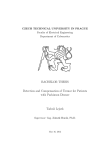
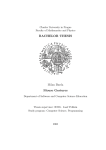


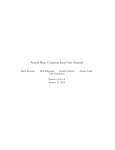
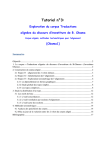
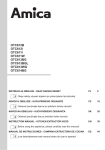
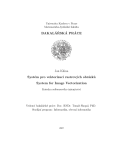
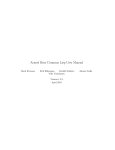
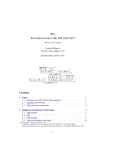
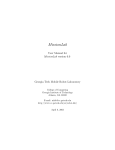
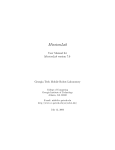
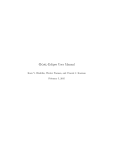

![reply_card [Converted] - TheMysticHelming.mono.net](http://vs1.manualzilla.com/store/data/005649301_1-3a046a309a634867449ff92cdd957a65-150x150.png)
